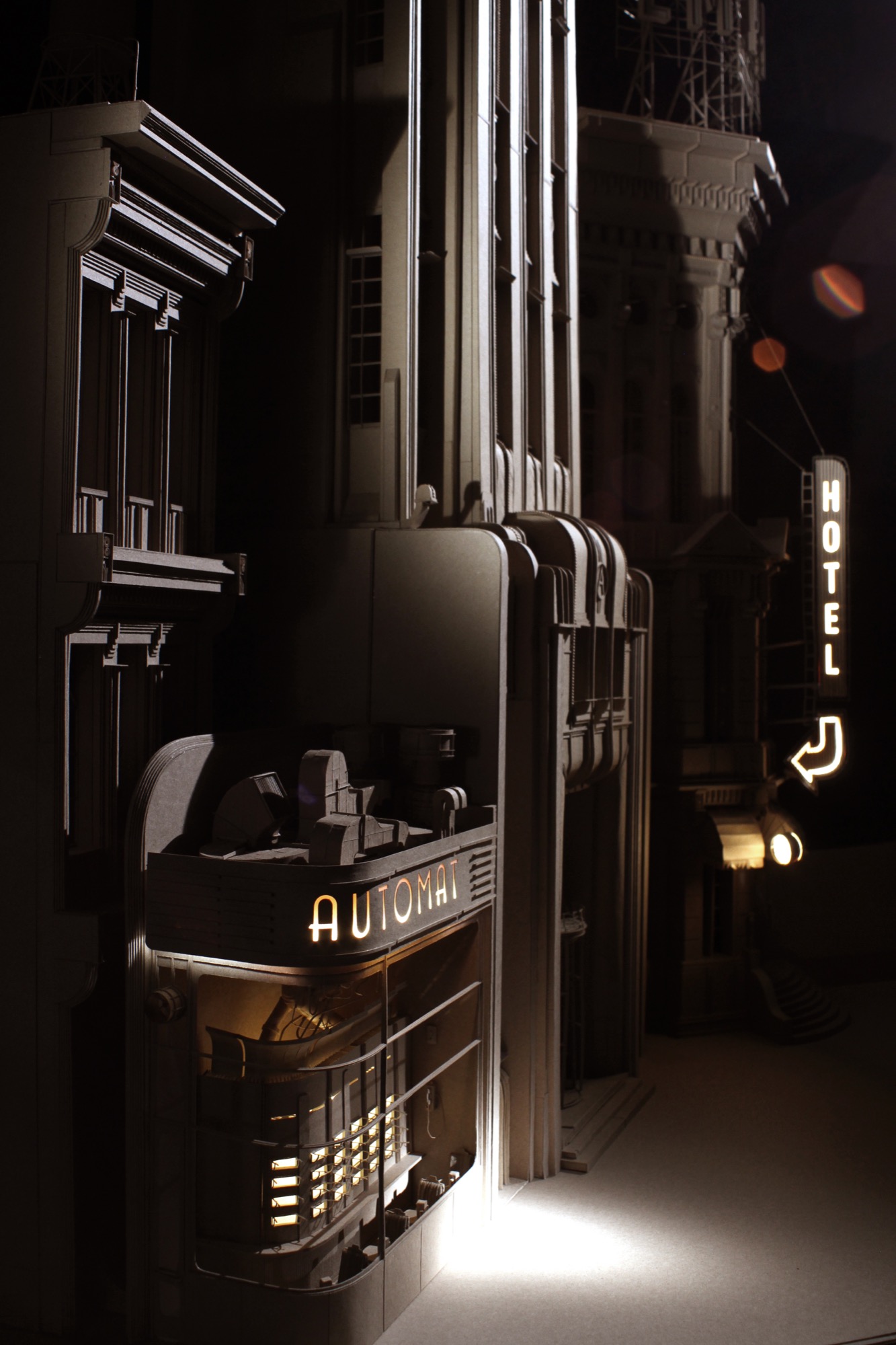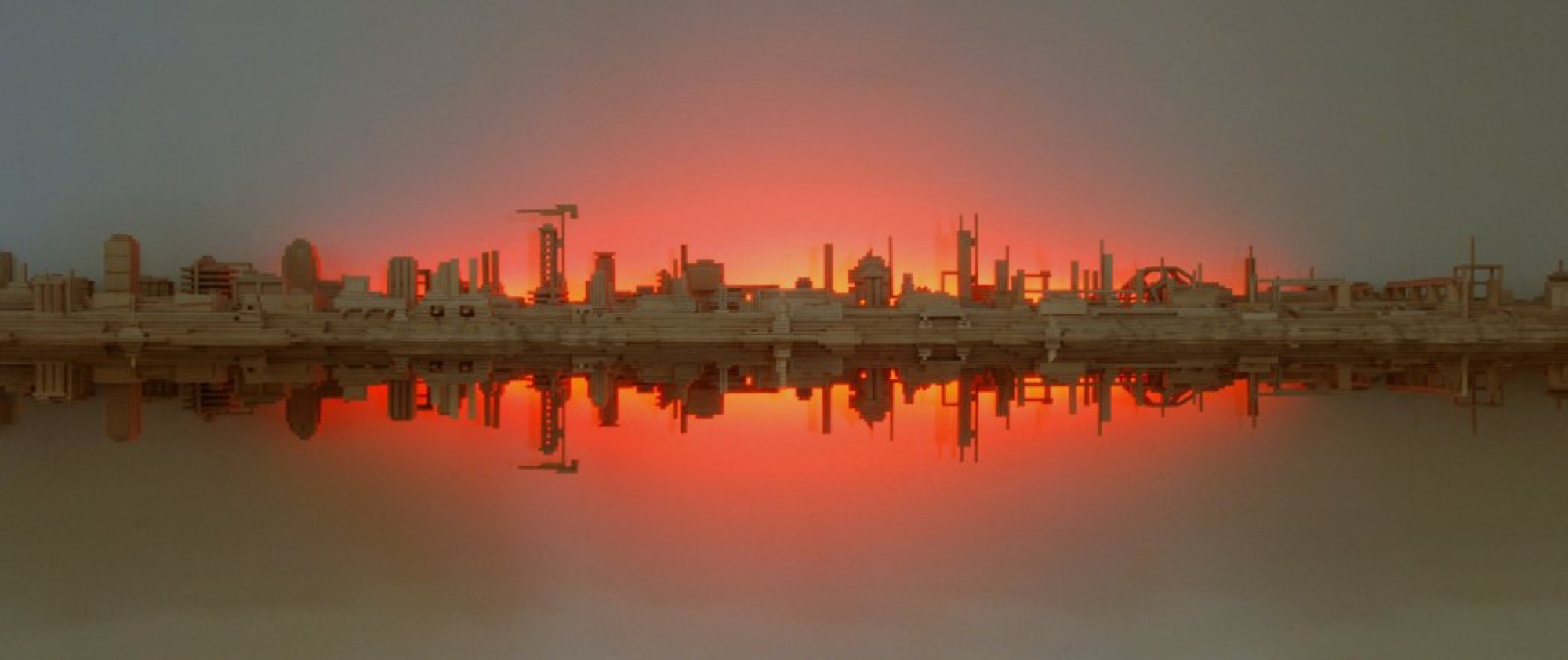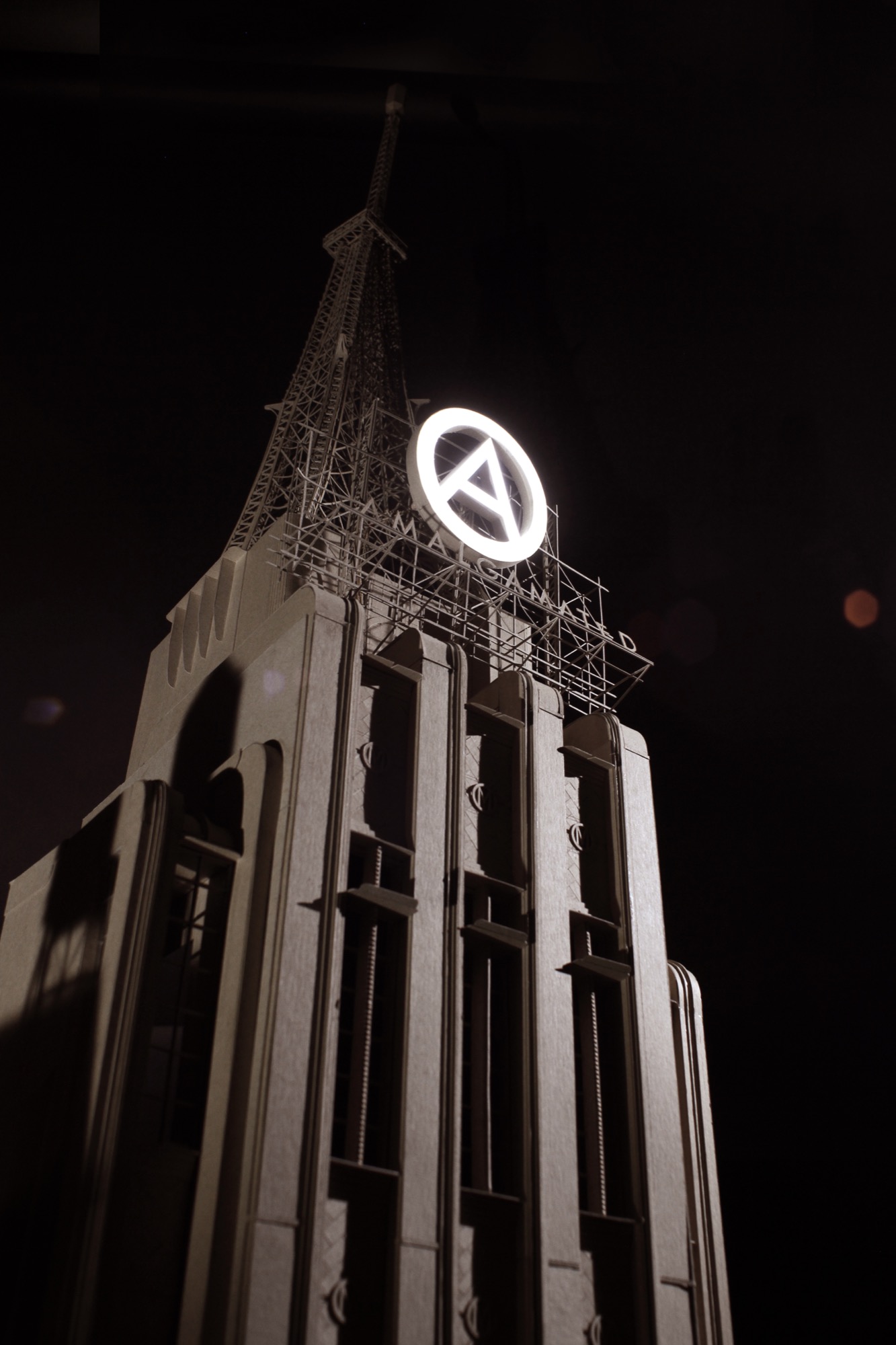Fictitious Realities
Beth Kearney
Fictitious Realities, the group exhibition of nine artists - Daniel Agdag, Tom Arthur, Simon Finn, Aki Inomata, Richard Giblett, Sam Jinks, Colin Suggett, Cyrus Tang, and Liu Zhuoquan – is on show at 'the Gallery at BACC' (its slightly abbreviated moniker) until 3 September. Nestled within the unsuspecting affluence of the City of Bayside, the Gallery at Bayside Arts and Culture Centre plays host to an exhibition whereby curator Robert Lindsay has executed a collective exercise in imaginative escapism.
There is a sometimes oneiric, at other times deceptive, and consistently subjective sense in Fictitious Realities. The title’s thematically combined, but apparently opposed, terms offer respite to the grim task of sense-making in the contemporary media cycle. 'Fiction' as something imagined (pejoratively, it is 'false') that is rendered beautiful or rearticulated poetically, and 'Reality' as the materialisation of truth or fact. And yet we know too well that 'truth' has also become a highly subjective term - perhaps essentially fictive itself - and thus art can be seen to embody all kinds of truths, depending on the position of the viewer. Lindsay refers directly to this notion of plural truths by including artworks that encourage the viewers to explore the context of each work, which precludes a singular imaginative interpretation of each.
The show is presented as part of the gallery's annual Midwinter Masters series, which exhibits significant artists alongside developing artists (last year the gallery paired work by eight contemporary female artists with a large body of work by Clarice Beckett, the beloved modernist painter of dawn and dusk along the Bayside region's coastline). This seems suitable considering the council gallery is not a competitive centre for challenging contemporary art, but rather a suburban venue that tastefully prioritises artwork related to its Bayside locale.
With this premise for the 2017 Midwinter Masters series in mind, it would seem that Lindsay is the 'significant artist', having more recently occupied important curatorial roles at the McClelland Sculpture Park+Gallery, the National Gallery of Victoria and the Art Gallery of New South Wales. (It is surely not a coincidence that his partner, Frances Lindsay, curated the 2014 Midwinter Masters exhibition at the gallery, Liminal Narratives.) Despite Lindsay's prominent curatorial status, he is not insensitive or forgetful of the Bayside council gallery's typical audience. Nor is he an artist.
The Gallery at BACC is dimly lit with a low ceiling, and the frequently partitioned spaces work to the favour of Fictitious Realities. The two rooms are positioned on either side of the hallway entrance to the historic Brighton Town hall, and the work in each room is separated by built-in columns. The many rooms and divided areas facilitate an exploratory experience and a compelling journey through the tight confines of the gallery space.

Some works are, admittedly, more impressive than others. The standouts are Sam Jinks' realist sculptures, The hanging man (2007) and Untitled (babies) (2012), which are masterfully crafted from silicone and human hair. Lindsay did well to position The hanging man obliquely facing the entrance to the gallery; suspended abjectly in the air, without clothes, ageing, head bowed, the first figure we see when entering the space. This old man and the newborn twins curled up on a plinth to his right seemingly force viewers into an uncanny encounter with their own mortality.
The weighty presence of The hanging man and Babies pervades the entire exhibition space. Evoking both the familiar (in their entirely unmistakable human semblance) and unfamiliar (betraying the old man's lifelessness is his shrunken form and the disproportionate length of his legs), the German term for uncanny, 'unheimlich', comes to mind. Freud notes that, etymologically at least, unheimlich translates to the English word unhomely. While the uncanny would normally connote the exclusively 'unknown and unfamiliar', unheimlich (or unhomely) also includes what is familiar, owing to the word's avowedly paradoxical attachment to its antonym, heimlich, which has explicit connotations with the home.
In this way, Jinks' silicone sculptures are faultlessly lifelike - from the veiny and purple undertones of the plump newborns to the receding hairline of the old man. While the detail and precision of their physical form is entirely familiar to us as humans, their insentience, motionlessness, slightly altered dimensions, and positioning on a plinth or suspended from the wall, are the definition of unheimlich and as such are impressively transporting. We witness, side by side, a diminishing life and the fruitful beginnings of two.
Other notable works include Daniel Agdag's miniature architectural compositions. Made from sepia cardboard, the three fastidiously rendered multi-dimensional tableaux carry a post-war Art Deco-style. Set for a film I'll never make (2012/2016) is a streetscape of a sky-rise called 'Amalgamated' (the title is an insight to Agdag's artistic process: rather than planning and drafting his creations, Agdag impressively relies on spontaneity to construct the works), an automat, and a hotel. Accompanying works include a bird house in a curved glass vitrine and a hot-air balloon with a machine attached (flight, and by extension escape, appears as a theme in much of his work). These tableaux include miniature light installations and probably hundreds of individually carved pieces of cardboard; we are transported to bygone industrial days rather than our virtual era, or the Internet of Things.

The playful titles of the works, Contraption (2016), Sets for a film I'll never make (2012/16) and The Bird House (2014), respectively, are void of any specific context or historical period, and therefore have potential for imagined contexts. And yet, the detail in these works is striking. Their old and other-worldliness recall pre-war architecture, flight, invention, and tried and true literary references to Walter Benjamin's Arcades Project, bringing to the exhibition an escapist sense of nostalgia for a time passed.
It could be argued that romanticising the past in this way is unproductive and indicative of a sort of hopeless ennui in the individual who engages in this kind of escapism. However, in our increasingly digitised environment, when answers are immediate and thoughtlessly sought, surely imagination can be posed as a healthy pursuit for netizens too often acting as visionless consumers of knowledge. In Fictitious Realities, Jinks and Agdag offer an opportunity to reflect, imagine - and yes - escape, because it is certain that visitors to the exhibition will re-emerge from the gallery inspired by its straightforwardly modest remit.
In Shiftwork (2007), Richard Giblett uses wood to piece together the horizon of a cityscape, backlit by a light a sunset-orange colour. Giblett creates what appears to be the reflection of the city below, by three-dimensionally and mimetically having the cranes and high-rises protrude from the top and bottom of the structure as in a mirage. This wooden creation is well-made and beautiful, but is hardly a 'fictitious reality' because the style of landscape takes us no further than the skyline of any developing city. Furthermore, it is disjointedly paired with Giblett's second work, Remnant (2010/17), another wooden construction of five flights of stairs that have survived a fire, the top half reduced to charcoal.

Tucked away in a projection room is Aki Inomata's video Why not hand over a 'shelter' to Hermit Crabs? (2014-15). Having grown up in Tokyo, Inomata expresses her disillusionment with overbearing built-up and digital urban environments. The video work pursues the day-to-day rhythm of the smaller life of a hermit crab (meaning 'a tenant' from the Japanese word 'yadokari') and its relationship to its own dwelling, implicitly tying this to our cities, whose existence and importance are in themselves entirely fabricated and artificial. The clear acrylic silicone hermit crab shell-cities that she made for the video are so beautiful that they can lead viewers to overlook a crucial implication: the hyperactive pace of the contemporary metropolis passes and thereby excludes those who are permanently stuck in transit – the homeless, displaced and persecuted minorities, and refugees.
Simon Finn, whose wooden structures bear a similar structural aesthetic to Giblett's works, masters the digital medium by experimenting with the illusory space of a two-dimensional video image and three-dimensional projector. His three video works explore notions of movement (think Eadweard Muybridge with architectural subjects in the digital age): we see fragments of buildings displaced from one video projection only to fly to another space where they are re-constituted whole. The light from the videos projects onto small-scale sculptures (strategically placed on plinths), a pier in The Pier (2013) and an observation tower in The Tower (2015), thus amalgamating the physical space of the sculptures and the virtual space of the light projection of his videos.
To my mind the standout pieces (Jinks and Agdag) suggest that Lindsay's curation remains thematically coherent throughout the entire exhibition, with some works more obviously successful than others. Despite the imaginative potential of the exhibition to transport its viewers, most of the other works in Fictitious Realities are generally less effective (that is, demonstrate less artistic skill and attention to detail than Jinks, Inomata, and Agdag do with silicone, video, and cardboard, respectively) and are in fact sometimes quite dull.

Cyrus Tang's highly reflective piece about the symbolism and resonance of materials is somewhat lost in the context of this exhibition, even as her two video works document the disintegration of materials. In contrast, Colin Suggett's three interactive and kinetic sculptures are highly immersive works that respond to the movement of visitors in the gallery, depicting enclosed spaces (a desolate corridor at midnight with a downcast nude male figure, a locked metal container with a jumping box, and a moving elevator). Liu Zhuoquan creates a haunting atmosphere with dark cast iron lamps, neihua (the Chinese folk tradition of 'inside bottle painting'), and images of snakes and sparrows printed on the inside of the glass lamps and bottles. Despite the haunting Edgar Allen Poe-aesthetic, the installation is also politically and historical reflective. The work extends along the right wall of the entrance to the second gallery, inviting the viewer to walk past the 12 cast iron lamp stands, which, as the title Chang-an Avenue suggests, allude to the road to Tiananmen Square.
Unfortunately, despite its thematic relevance and skilful rendering, Tom Arthur's work overcomplicates its meaning within the exhibition. Arthur's three dioramas are made from found materials such as iron and wood, as well as animal skeletons and taxidermy. The half metre wide vitrines contain birds, snakes (either with feathers, fur, or in their skeletal form). Via an objet trouvé aesthetic, Arthur attempts the imbue the works with meaning: the burnt wood bases symbolise destruction from fire and renewal in the art, the metal which grotesquely protrudes from the mouths of the animals seem to represent speech bubbles and symbolise a dialogue with the viewer, the titles of The temper under the eyelid (2015) and The Oil and the Bubble of the Moon (2015) re-enact a Dylan Thomas poem, and the tree, snake, and fallen fruit in The Garden (2015) are obviously biblical references. However, the sculptural compositions appear cobbled together, with an improvisational quality that tends to become incoherent in a way that is uninteresting.
Overall, Fictitious Realities invites imaginative escapism. And yet, importantly, it is well-suited to the times because it comments directly upon an era where there is an excess of information and sources of truth, leading to an abundance of 'facts'. Interestingly, Lindsay does not seem to condemn the global lack of regard for impartiality in this apparently 'post-truth' moment. Instead, it strikes me that Lindsay is arguing for fictional and imagined 'truths' that have much to offer: concentrating on alternative and imagined contexts can be a rewarding way to retreat from manufactured anxieties.
In the context of Fictitious Realities this is not problematic, because thankfully the gentle humanitarian ethic in works like Inomata's video (which is both unthreatening and insightful), suggests the most socially and politically reflective work is often found in simple ideas. These days it is common to find that the pervasiveness of information and the expectation to know, believe, and express something – anything – permeates every interaction. In this way, the comfortably suburban Bayside locale provides an ideal oasis for cathartic withdrawal from a time overloaded with politically charged realities.
Lindsay's exhibition is therefore neither politically intense nor bereft of a worldly conscience, and while it does attempt to transport its visitors, it does not test personal verities as much as it opens the avenues of the possible. Fictitious Realities, with its oblique reference to changing notions of truths, is not overt and yet this makes it feel refreshingly relevant. From the offensively inoffensive confines of suburban Melbourne, it is a rewarding departure from the banalities of pursuing social justice through social media.
Beth studies Art History as well as French Language and Literature. She is undertaking a research Masters in Montréal from September 2017.


